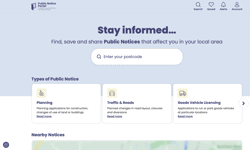No one could have missed the growth of search engines such as Google over the past few years. They’ve become a dominant force on the web and in the media.
But there’s less awareness of a new area in search – vertical search engines, focused on particular industry segments or products. Yet some people think vertical search is where the industry is headed. Alex White of the Association of Online Publishers says, "It’s an interesting extra layer of value and functionality for users, over and above pure content, to ensure people come to you as a first port of call."
Phil Callow of vertical search engine Search Medica says that the business developed naturally out of CMP’s existing operations, such as GPs’ magazine Pulse. "We have strong B2B businesses that have traditionally been in print content, and one of the things we picked up in our research is that doctors are using the internet more and using search more. So that got us thinking about what the opportunity was."
Volume Out, Targeting In
The big search engines have their failings, particularly for business users. Research shows that the majority of B2B searchers don't find what they are looking for. Google delivers great results but it is simply too broad, and too driven by volume, to give specialist users what they want. Giles Grant, managing director of Incisive Media's Interactive Marketing Division, says "There is a long tail with Google that has no added value." Business users want to find ten good references, not the millions they can hit with Google.
So vertical search engines narrow the field, in a number of ways. Most of them access only a defined, pre-vetted universe of sites – looking for ‘breasts’ in medical sites won't get too many references to Pamela Anderson. Alex White says, "It’s all about the context and the metadata" - the search engine knows, for instance, that the user is looking for business related information, not a product page, or that ‘ceramic’ means fillings to dentists, not mugs or tiles.
"If your search engine knew who you were and what you were looking for, could you get a better result?" says Phil Callow – obviously the answer is ‘yes’.
Because business users are time poor and highly specific in their requirements, B2B is an obvious area to exploit. It’s here that many firms have focused their vertical search efforts. For instance, Reed has set up a B2B search engine, Zibb, across various verticals; it incorporates tagging as well as text search, enabling users to refine results by specifying the industry area they want to search. Some pure start-ups and new media companies also target areas such as engineering (GlobalSpec) and software development (Krugle).
Adding Value
Search Medica is a good example of such an engine. It has reviewed and validated a universe of 1,200 relevant sites and created a strong platform to engage with its defined community. Research into how GPs use the product has led to the creation of a separate field for patient information – print outs which can be given to patients – as well as standard search results. Doctors can also search for ‘NHS only’ - in fact Phil Callow claims this is the easiest way into the NHS, since there’s no single NHS entry point on the web!
Integrating B2B search into the work process enables extra value to be added. Giles Grant says, "It’s about giving people a solution on their desktop, that feeds into the actual work process. So the magazine becomes something much more fluid."
Reed Construction Data is a complete portal rather than a vertical search engine, but here again the thinking has been to create assistance with workflow rather than just a separate information repository. For instance, online estimating tools have been included alongside publications and databases.
As this shows, it’s not just easy retrieval that matters. Added value comes in the shape of structure, context, and disambiguation.
That means vertical engines are developing in quite different areas from Google. For instance, Phil Callow says, the software has to be quite different - "We’re using a pure relevance rather than a popularity algorithm." Google cares whether your page is popular – Search Medica cares whether it is authoritative.
Editorial focus and peer review are what readers look for in good trade journals, and they’ll continue to be rewarded by users of vertical search. The algorithm starts the business, says Andy Black of Convera, a search technology provider, but "You have to have a human intervention to validate the content, and that’s where the editor of a print publication comes in." That can also assist the integration of the print brand into the online brand.
Consumer Applications
But while B2B has been the quickest area to adopt vertical search, consumer magazines also have opportunities. Those with special subject matter, such as consumer electronics or computer games, and particularly those where reviews are an important feature, may find viable applications. Giles Grant suggests that bridal magazines, for instance, have the ability to monetise search; "It works with both B2B and consumer markets."
Vipin Jain, CEO of US start-up Retrevo, which searches consumer electronics data, points out that the consumer electronics market is worth over USD 100bn, with a big chunk of this now spent online. That’s transactional revenue he can monetise. And by helping users search for functionalities or attributes (‘handles flac files’) rather than products, he can offer something the merchant sites can't.
Jain sees vertical search as part of a Web 2.0 universe in which it interlocks with other social networking media. "With online compared to print, you have a lot more interactivity and sharing that can occur. Vertical search might be the starting point, but then how do you lead the user to an answer?" People may want to ask for other users’ experiences of a product, for instance, or to interact with a supplier. Or they may want the site to ‘maintain state’, keeping details accessible for some time through different applications; for instance, if they are comparing different models of HDTV or attempting to compile a system out of different components.
This all adds functionality that is not ‘pure’ search but which adds value to the consumer. Andy Black says, "The publisher can become the community source", a MySpace or Facebook for a particular vertical. And, Vipin Jain suggests, higher levels of personalisation offer the possibility that the ‘my newspaper’ dream that publishers have struggled with for so long could actually come to fruition after all.
Search technology is well advanced – there’s no need for publishers to develop it in-house. Giles Grant says Incisive is looking at a number of different third party technologies as well as having some of its own. Convera is a major contender, which is being used by Search Medica, and there’s also FAST, which Reed Business uses. However, while Convera works on a revenue share model, FAST has to be paid for up front, he says.
The market opportunity is huge. $7.4bn was spent on search engine marketing in 2005 according to technology provider Search Channel. While this is currently mainly headed for the big search engines, that could change – particularly for the 16% that’s targeting B2B – if vertical search gets things right.
Giles Grant suggests that the defining characteristics of a market that’s good for vertical search are that it’s data rich, and where the audience is going to be using search day to day, looking for that data. "If the sector already has a taxonomy, like law or medicine, that’s helpful," he says, "but it’s not crucial."
Business Models
Business models for vertical search are likely to follow those for the bigger search engines, which are mainly advertising funded. However, subscription funding may well also be possible where the engine can add substantial added value, for instance by providing access to proprietary databases or additional content.
Giles Grant says that, "People are still assessing models. You’re looking at a cross between advertising and subscription – but you could also look at lead generation. You’re driving traffic which is very targeted, so its value to the advertiser is greater than with print or generic search." For instance, in the financial market, putting buyers and sellers together in a specific sector like private equity could be immensely valuable.
This is where existing publishers, who have the relationships with advertisers and with their reader communities, have a natural advantage. Phil Callow points out that it’s much more difficult for pure start-ups to enter existing vertical markets than it is for them to serve the mass market. For instance, Pulse already has relationships with most of the pharmaceutical companies, making it easy to sell them advertising on Search Medica.
Even so, Search Medica has had to invest to start up, and though Callow says sales are going well, it’s not profitable yet. But with a scalable business model - "you have none of the costs of expansion associated with a print product" - he’s confident that it will break through into the black, though he won't be drawn on exactly when.
Brand Decisions
Linking the search engine with existing brands raises interesting questions. Most publishers so far have created new brands for their vertical search engines rather than tying them to an existing publication. Phil Callow says this keeps the way open for future expansion - "Search Medica could well extend in future beyond GPs, at which point the brand might run out of steam."
But Giles Grant believes the brand equity in a single magazine could be leveraged efficiently by giving it its own search engine. "We could be looking to do both. We could take a broad range and say we’ve got several publications in a sector, let’s support them all with this engine, or we could take a single magazine and develop a search engine targeted in that particular segment."
In some ways, vertical search is only doing what online portals and B2B databases have already done for a long time. But in other ways, it raises issues of identity; if you add a search engine to a magazine, what have you got – a software, a database, a publication? What is the key brand?
By going into vertical search, the publisher becomes a gatekeeper or editor of content – no longer the sole provider. Proprietary content has to be blended with information from outside the publication and in some ways, it’s the blend, not the in-house content, that creates the value added.
Giles Grant believes that the days of ‘pure’ publishing are numbered. "I tend to look at things not as publishing any more but as value added," he says. "I can give you lead generation, I can give you vertical search, I can give you editorial content." His main preoccupation is to keep his users coming back to him, whatever they happen to be looking for today.
FEATURE
Vertical Search
Across the web, the big search engines rule supreme, seemingly sweeping all before them. Yet there is one corner of the internet, where the volume driven models of Google & co are having trouble servicing effectively, and that is B2B. Highly targeted vertical search engines are hence growing in popularity; Andrea Kirkby looks at this trend.










